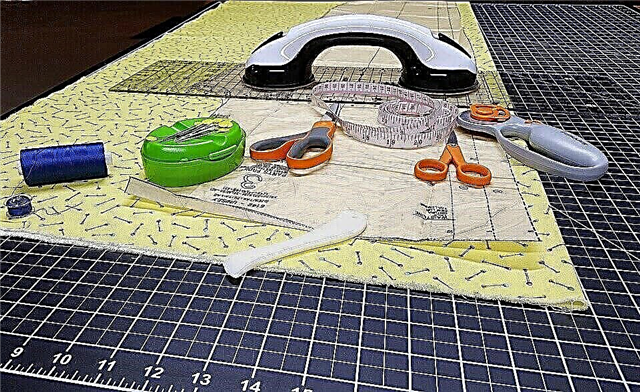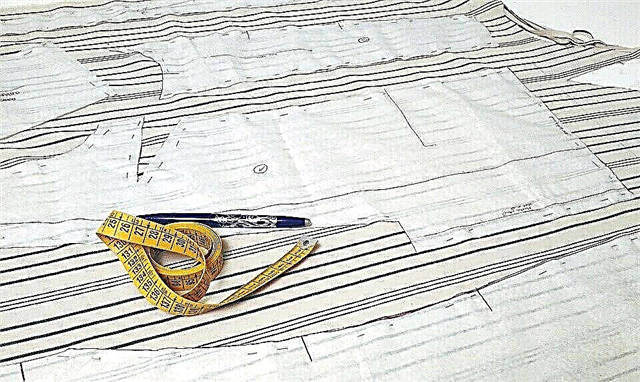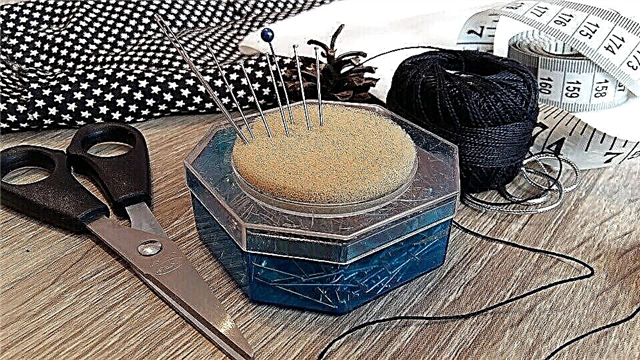These tricks and tips will help speed up the cutting process and facilitate the work.

Not all of these tips apply in every case. But they will definitely be useful if you regularly sew and want to spend less time on the cutting process.
1. Choose high-quality and convenient scissors

Good scissors cut faster and nicer. Pay attention to the sharpness of the blades, and to their position when the scissors are closed. It is better if the tips completely close: then the scissors will cut the fabric for the entire length of the blades, they will not bite the material. Scissors with pointed ends, as a rule, are more convenient to use than scissors with rounded ends: the former cut the fabric directly at the surface, and the latter lift it slightly; the former glide better when cut. It is more convenient to cut thick fabrics with more massive scissors with long blades, thin ones - easier with scissors with shorter blades. But you can do it alone - the main thing is that they work well and lie comfortably in your hand.
How to choose scissors for sewing: types and purpose
2. Use more space

Cutting is faster if it is possible to immediately decompose all the details of the pattern on the fabric. If there is no table of sufficient size, use the floor. Some needlewomen cover directly on the carpet (there are even options when the fabric and patterns are laid out on the mattress from which the bed was removed!),but not everyone is comfortable, in addition, pins may be lost in the carpet (or mattress). There is such a life hack: cover the carpet / floor with a large piece of thin linoleum and cut on it. If you pick up linoleum with a geometrically correct pattern, it will also be a kind of markup. When there is not enough large space, it is easier to carve out large parts first, and then small ones.
Layout patterns on fabric: a complete guide
3. Use weights instead of pins

It can be weights or weights specially designed for cutting, or improvised suitable items. For example, large nuts, metal washers, smooth stones brought from the sea (finally it will be clear why we drove them) are suitable, for large parts - large lines. Lay out the details of the pattern on the fabric, press down with weights, align - no pins are needed. In the case of thin fabrics, this method is also good because there will be no extra reason to pull the strings with pins.
Save wisely: an alternative to weights for fixing patterns
4. Use a ruler to mark allowances

The fixture, which greatly accelerates and facilitates the marking of allowances, is a ruler with a movable limiter.
Sewing "lotions", or Everything that helps to cut and sew
5. Where possible, use cutting knives

Ideally, if you sew a lot and want to facilitate and speed up the process, you should get:
- a large cutting knife - it is convenient for them to make long cuts;
- a small knife for smoother lines, details;
- mat-substrate of maximum size;
- a suitable ruler.
In addition to working faster with knives, they give straight, smooth cut lines. On the mat, as a rule, there is a marking - this also facilitates and speeds up the work. Of course, you need to learn to work with a knife, but the result is worth it. Yes, and you must not forget to change the blades on time.
Knives and cutters: how to choose and what to use
6. Cut the lining details over the main fabric parts

After cutting out the details from the main fabric, use them as templates for cutting parts from the lining.
What to do if the lining slides
7. Cut the stitches for the details of the main fabric.

Use the cut part as a template for cutting the surface.
What is a sharpening
8. If you sew two things on one pattern, cut them at once

This does not happen very often, but if it happens, then why not take the opportunity to reduce the time for cutting? For example, you sew two identical t-shirts of the same or different colors. Spread one layer of knitwear on the other, align and cut both at once.
How to sew faster: tricks and tips
9. Arrange "cutting sessions"

The method is not suitable for everyone: there are needlewomen who prefer not to start a new project until the previous one is completed. But if for you this principle is not very important, and it is planned to sew not one, but several things in the near future, you can arrange a “cutting session” and cut everything out in one approach (but in turn, of course). Then lay out the details of the projects in separate bags / baskets / organizers, so as not to get confused, and proceed with sewing.
Photo: Pixabay, burdastyle.ru



